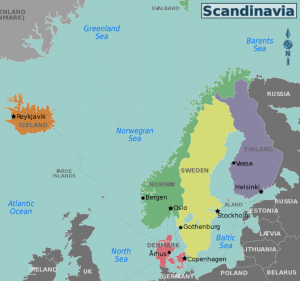THE ENVIRONMENT AND ECOLOGY
1. WORLD MIGRATORY BIRDS DAY
THE CONTEXT: Arctic migrants such as the Pacific Golden Plover and Curlew Sandpiper have seen major decline in numbers in the past three decades, potentially due to pronounced effects of climate change in the Arctic
THE EXPLANATION:
- Several migratory species that make transcontinental journeys from northern latitudes to avian hotspots in India are increasingly facing threats such as climate change and habitat loss.
- There has been a decline in the number of waterfowl as well as shorebirds visiting wetlands including Bharatpur in the last 20-25 years.
- Arctic migrants such as the Pacific Golden Plover and Curlew Sandpiper have seen major declines in the past three decades, potentially due to pronounced effects of climate change in the Arctic.
- The Pacific Golden Plover declined by almost 85-90 per cent in the last 25 years according to the State of India’s Birds report based on observations uploaded by birdwatchers to the online platform eBird. The Curlew Sandpiper has declined by 80 percent likely reasons for the decline of these two species are climate change and changes in their breeding areas.
- Everybody loves the sight of flocks of exotic birds making the most of the winter sun. But how many pause to think of how their lot really fare?The eve of World Migratory Bird Day is marked for raising awareness.
2. THE HIDDEN ENVIRONMENTAL COSTS OF INDIA’S DATA CENTRE PUSH
THE CONTEXT: Data centres are giant industrial collections of servers that store and process data underlying the modern information economy.
THE EXPLANATION:
- Data centres are a crucial element of modern information and communication technology industries. They are giant industrial collections of servers that store and process data underlying the modern information economy. The control of data centres offers economic benefits as well as the ability to achieve data sovereignty.
- The Indian data centre market is estimated to grow to $5 billion. In addition, India’s natural resources, connectivity to global markets and strategic location at the junction of multiple submarine cables offers private players good incentives to invest in data centres.
- Recognising this, the Government of India released a draft ‘National Data Centre Policy‘ in 2020. Several major states have also notified their respective data centre policies and others have signed MoUs with private players to develop data centres. This is how the installed data centre capacity of India is expected to double from 499 MW in 2021 to 1,008 MW by 2023.
- These policies however, ignore a very pertinent issue with data centres their environmental impact.
- Data centres affect the environment in two major ways: electricity consumption and water usage. They are online 24/7 and require power back-up and a captive power source, as well as a substantial volume of water to stay cool. They often have a deleterious impact on nearby watersheds along with emissions issues arising from the disposal of cooling water and waste heat.
THE ECONOMIC DEVELOPMENT
3. RBI OPENS BANKS CREDIT FOR NBFCS TO ON-LEND CONTINUOUSLY TO PRIORITY SECTOR
THE CONTEXT: Bank credit to NBFCs, including HFCs, will be allowed up to an overall limit of 5% of an individual banks total priority sector lending
THE EXPLANATION:
- The Reserve Bank of India (RBI) decided to allow banks to lend to NBFCs for on-lending to priority sectors on an on-going basis to ensure continuation of the synergies that have been developed between banks and NBFCs in delivering credit to the specified priority sectors. The same holds true for small finance banks who are on-lending to NBFC-MFIs. This facility was earlier allowed till March 31, 2022.
- Now, bank credit to NBFCs, including housing finance companies (HFCs), for on-lending to priority sectors will be allowed upto an overall limit of 5 per cent of an individual banks total priority sector lending. Similarly, small finance banks for on-lending to NBFC-MFIs and other MFIs, which are RBI recognised, will be allowed up to an overall limit of 10 per cent of an individual bank’s total priority sector lending.
- These limits shall be computed by averaging across four quarters of the financial year, to determine adherence to the prescribed cap.
- Small finance banks will be allowed to lend to registered NBFC-MFIs and other MFIs who have a gross loan portfolio of upto Rs 500 crore as of March 31 of the previous financial year.
- In case the gross loan portfolio of the NBFC-MFIs/other MFIs exceeds the stipulated limit at a later date, all priority sector loans created prior to exceeding the gross loan portfolio limit will continue to be classified by the small finance banks (SFBs) as priority sector lending till repayment/maturity, whichever is earlier.
4. INDIA BANS IMMEDIATE EXPORT OF WHEAT TO CONTROL RISING DOMESTIC PRICES
THE CONTEXT: The government has banned the export of wheat with immediate effect in a bid to control rising domestic prices
THE EXPLANATION:
- India is the second-largest producer of wheat in the world, with a share of around 14.14 per cent of the total production in 2020. The country produces around 107.59 million MT of wheat annually and a major chunk of it goes towards domestic consumption.
- The move comes after India’s retail inflation rose to an 8-year high of 7.79 per cent in April, “largely driven by rising fuel and food prices and staying well above the Reserve Bank of India’s upper tolerance limit for a fourth consecutive month”.
- This also comes days after India decided to send trade delegations to countries such as Morocco, Tunisia, Indonesia, Philippines, Thailand, Vietnam, Turkey, Algeria and Lebanon to explore the possibility of boosting wheat exports.
- food inflation reached a multi-month high in March globally and was “expected to remain elevated due to higher vegetable and cooking oil prices” across the world.
THE SCIENCE AND TECHNOLOGY
5. SCIENTISTS GROW PLANTS IN LUNAR DIRT, THE NEXT STOP MOON
THE CONTEXT: For the first time, scientists have grown plants in soil from the moon collected by NASA’s Apollo astronauts.
THE EXPLANATION:
- Researchers had no idea if anything would sprout in the harsh moon dirt and wanted to see if it could be used to grow food by the next generation of lunar explorers. The results stunned them.
- The longer the soil was exposed to punishing cosmic radiation and solar wind on the moon, the worse the plants seemed to do. The Apollo 11 samples — exposed a couple billion years longer to the elements because of the Sea of Tranquility’s older surface — were the least conducive for growth, according to scientists.
- This is a big step forward to know that you can grow plants, “The real next step is to go and do it on the surface of the moon.”
6. ISRO SUCCESSFULLY CARRIES OUT STATIC TEST OF GAGANYAAN ROCKET’S BOOSTER
THE CONTEXT: The Indian Space Research Organisation successfully completed the static test of a human-rated solid rocket booster (HS200) for the Gaganyaan programme at Satish Dhawan Space Centre (SDSC) in Sriharikota, Andhra Pradesh.
THE EXPLANATION:
- The Indian Space Research Organisation on Monday successfully completed the static test of a human-rated solid rocket booster (HS200) for the Gaganyaan programme at Satish Dhawan Space Centre (SDSC) in Sriharikota, Andhra Pradesh.
- The HS200 is the human-rated version of the S200 rocket booster of satellite launch vehicle GSLV Mk III, popularly known as LVM3.
- The S200 motor, which is the first stage of the LVM3 launch vehicle intended for launching a 4,000 kg class satellite to the geosynchronous transfer orbit, was configured as a strap-on rocket booster.

- Based on the successful launch pedigree of this launch vehicle including the Chandrayaan mission, the LVM3 has been identified as the launcher for the Gaganyaan mission.
- For the manned space mission, LVM3 launch vehicle underwent improvements stipulated by the requirements of human rating.
- The additional safety features for motor case joints, robust insulation and ignition systems. The control system used in this booster employs one of the world’s most powerful electro-mechanical actuators with multiple redundancies and safety features.
- The system is indigenously designed and developed by ISRO in participation with various industries spread across the country.
- The HS200 booster loaded with 203 tonnes of solid propellant was tested for a duration of 135 seconds. The 20-metre long and 3.2 m diameter booster is the world’s second-largest operational booster with solid propellant.
- With the successful completion of this test, ISRO marches one more step closer to Gaganyaan Programme.
- Out of the three propulsion stages of LVM3, the human-rated versions of the second-stage known as L110-G loaded with liquid propellant and the third stage C25-G with cryogenic propellant are in the final phase of qualification, including tests with static firing.
- Gaganyaan programme, the most prestigious scientific endeavour of India, is steadily progressing towards its final goal of taking an Indian to space and bringing him safely back.
THE PRELIMS PRACTICE QUESTIONS
QUESTION FOR 14th MAY 2022
Q1. Which of the following is not a member of Shanghai Cooperation Organisation (SCO)?
- Kazakhstan
- Afghanistan
- Tajikistan
- Uzbekistan
ANSWER FOR THE 13TH MAY
Answer: D
Explanation:
Please refer to the given map-


